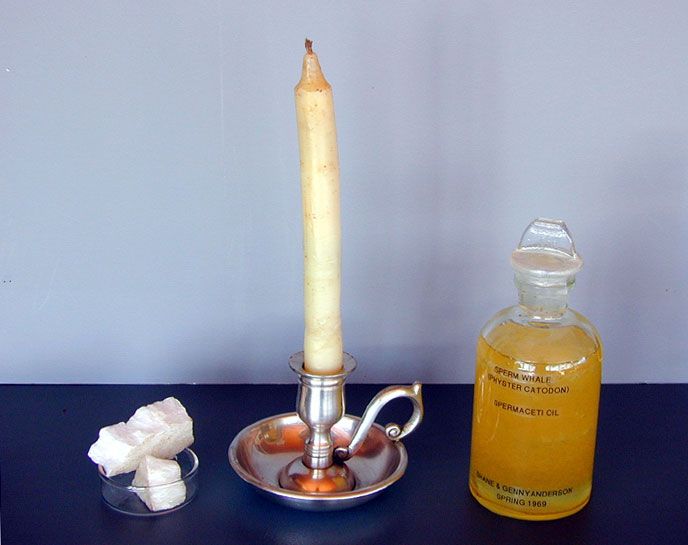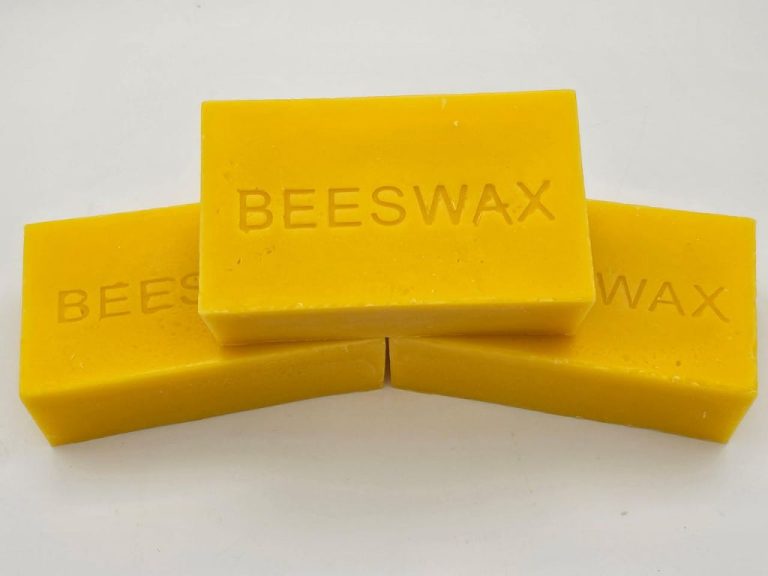How Is Wax Made From Animals?
Wax is a diverse class of organic compounds that are solid at room temperature, become malleable between slightly above room temperature and ~100°C (212°F), and melt near and above room temperature. They have a relatively low viscosity upon melting. Waxes exhibit crystallinity and a variety of other physical properties like hydrophobicity, flexibility, mechanical toughness, low moisture vapor transmission rate, and resistance to chemical attack.[1]. They have a complex chemistry with hydrocarbons, fatty acids, esters, and alcohols being major components. Waxes have an array of applications including lubricants, polishes, candles, coatings, cosmetics, and food additives.
Wax is produced by a number of animals like honey bees, woolly sheep, and sperm whales as well as plants like carnauba trees. Each source results in wax with distinctive chemical compositions and physical properties due to the other associated organic compounds. Animal waxes typically consist of complex mixtures of compounds like long chain alkanes, acids, alcohols, ketones, and esters. The relative abundance of these compounds determine the melting point, hardness, and other characteristics. Refining and modification processes allow tailoring waxes for specific applications.
This article provides an overview of wax production from different animal sources. It explores the chemical makeup of each wax, how it is naturally produced and harvested, historical background, and modern collection and refinement methods.
Beeswax
Beeswax is produced by honey bees in their hives to build honeycomb structures. Honeycomb consists of hexagonal cells which are made from beeswax. Worker bees secrete beeswax from glands in their abdomens and use it to construct the honeycombs 1.
To produce the wax, worker bees consume honey. The consumption of 6-8 pounds of honey is required for bees to secrete 1 pound of wax from their wax glands 1. The bees chew the wax secretion into flakes and use it to build the comb one cell at a time. The perfectly geometric hexagonal structure provides the maximum amount of space for honey storage using the least amount of wax.
Harvesting Beeswax
Beeswax is harvested from honeycombs built by honey bees in their beehives. Beekeepers will typically harvest beeswax a few times a year, often in conjunction with honey harvesting. There are a few main methods for collecting beeswax from hives:
One method is to cut off the wax caps from honeycombs using a heated uncapping knife. The wax pieces are collected into a bucket to be melted down later. This is done when beekeepers harvest honey, as the wax caps must be removed to extract the honey (https://www.wikihow.com/Harvest-Beeswax).
Another technique is to crush old honeycombs and strain out the honey, pollen, and bees. The leftover wax is then rinsed and melted. Beekeepers will often remove darker combs after a season or two of use in order to encourage bees to build fresh comb (https://resources.beesfordevelopment.org/rc/harvesting-beeswax/).
The collected wax then goes through a melting and filtering process to purify and clean it. The wax is heated in water or steam to melt it down. It is then filtered to remove impurities. The liquid wax may be further filtered through cheesecloth or allowed to fully harden before a final filtering.
Lanolin
Lanolin is a wax secreted by the sebaceous glands of wool-bearing animals like sheep. It is derived from wool grease, also known as wool wax or wool yolk. Lanolin helps waterproof and lubricate the sheep’s wool and skin.
To extract lanolin, raw wool is washed in a series of hot water and detergent baths to remove dirt, debris and suint (dried sweat). The wool wax rises to the surface and is skimmed off. The wax then goes through a refining process to remove impurities and concentrate the wool alcohols. This produces a purified, stable lanolin wax.
Lanolin has emollient properties and is used in many cosmetics, personal care products and ointments. It acts as a moisturizer, softener and protectant when applied to the skin. Lanolin is also used commercially for lubricants, rust inhibitors and in shoe polish.
Lanolin Uses
Lanolin wax has a wide range of uses and applications due to its emollient properties. One of the most common uses of lanolin is in skincare products such as lotions, creams, balms, and ointments. Lanolin acts as an effective moisturizer and helps prevent dry, cracked skin. It also has occlusive properties that allow it to form a protective barrier on the skin, preventing moisture loss. This makes lanolin useful for treating conditions like eczema, psoriasis, and extremely dry skin (1).
In addition to skincare, lanolin is also used as a lubricant. It has lubricating properties that allow it to reduce friction. Lanolin is often found in products like nipple creams for breastfeeding mothers, lip balms, and shaving creams. It helps prevent irritation and discomfort. Lanolin’s lubricating abilities also make it useful as a machine lubricant in industrial applications (2).
Other uses of lanolin include waterproofing materials like leather and wood, manufacturing carbon paper, preventing corrosion, and even stabilizing dynamite. As research on lanolin continues, new applications and formulations containing the wax are likely to emerge.
(1) https://steptohealth.com/lanolin-wax-uses-and-recommendations/
(2) https://steptohealth.com/author/daniela-andarcia/
Whale Oil
Oil extracted from whale blubber was used historically to fuel lamps and to manufacture soap and margarine. Whaling for whale oil became a major industry in the 1700s due to demand for whale oil for lighting. According to Davis (1997), “The early history of whale oil production was similar, but the peak of output was not reached until 1845-49, after which time output declined.”
The process of extracting oil from whale blubber involved “trying out” the blubber by heating it in large vats known as try pots. The whale oil was then stored in casks and transported back to the whaling vessel’s home port. Whale oil was produced through this labor-intensive process until petroleum oil began displacing whale oil in the 1860s.
For additional history on whale oil production, see: Davis, L.E. (1997). The Rise of the Atlantic Economies. National Bureau of Economic Research.

Spermaceti
Spermaceti is a waxy substance obtained from the head cavities of sperm whales (Physeter macrocephalus). It is a liquid wax that solidifies at room temperature after being extracted from the whales.
Spermaceti was highly valued due to its unique properties and uses. Its name comes from the Latin words “sperma ceti” meaning “sperm of the whale” (study.com). Spermaceti makes up the spermaceti organ inside the whale’s head. This organ may help with buoyancy control and act as an acoustic lens to focus sounds during echolocation (study.com).
To obtain spermaceti, whale hunters would capture and kill sperm whales, remove the spermaceti organ, and extract the liquid wax. The wax would then solidify into a white, crystalline substance. In the 18th and 19th centuries, sperm whaling became a major global industry focused on obtaining spermaceti.
Spermaceti had a number of uses historically, though most applications have declined today. It was used to produce smokeless candle wax, lubricants, cosmetics, leather dressings, and textile treatments. Spermaceti does not go rancid easily, making it useful as an ointment base. The substance produces a bright, clear flame, so it was an ideal candle wax before petroleum (study.com).
Chinese Insect Wax
Chinese insect wax is made from the secretions of scale insects native to China and other parts of Asia. Two main species are used to produce the wax: Ceroplastes ceriferus, common in China and India, and Ericerus pela, found in China and Japan. These scale insects feed on the sap of trees and shrubs, secreting a wax coating to protect themselves. Chinese insect wax has been produced for over 1,500 years.
To produce the wax, the scale insects are cultivated en masse on trees. The coatings are then scraped off their bodies and processed to create refined wax. It takes around 1,500 scale insects to produce just 1 to 2 grams of wax. The insects are able to quickly regenerate their coatings, so they can be harvested repeatedly without harm.
Chinese insect wax has properties similar to beeswax, but is harder and has a higher melting point. It has traditionally been used to make candles, polishes, and wax prints. Today it is also used in cosmetics, medicinal ointments, and for wax prints. Chinese insect wax is considered a high quality natural wax due to its purity and properties.
Modern Production
In the late 19th and early 20th centuries, there was a shift away from relying on whale oil, beeswax, and other natural animal and vegetable waxes for commercial uses. Advances in petroleum refining allowed for the development of paraffin wax, a highly refined byproduct of petroleum.
Paraffin wax is chemically inert, odorless, tasteless, and nontoxic. It has a melting point ranging from 46–68°C, making it ideal for applications like candles. Paraffin is also relatively inexpensive to produce. These properties quickly made paraffin the industrial wax of choice by the early 1900s.
Other synthetic waxes like polyethylene (PE) wax are also commonly used today. PE wax is produced by the catalyzed polymerization of ethylene. It offers properties like high melting point, low viscosity when molten, flexibility, and resistance to moisture. Modern techniques combine PE wax with sophisticated digital imaging equipment for applications ranging from 3D printing to ski wax.
While synthetic waxes dominate industrial uses, natural waxes like beeswax and vegetable-based waxes are still produced. Beeswax remains popular for artisanal candles, cosmetics, furniture polish, and as a food additive. Soy and other vegetable waxes are often blended with paraffin for candles and commercial uses.
Conclusion
Animal waxes have long been important sources of commercially useful waxes, with beeswax, lanolin, whale oil, and Chinese insect wax being some of the most significant. However, the harvesting of animal waxes raises important ethical considerations around sustainability and humane practices.
As we have seen, beeswax is gathered as part of the overall honey production process, without harm to bees when done conscientiously. Lanolin is a byproduct of wool production that does not require harming sheep. However, histories of commercial whaling and insect harvesting demonstrate how animal welfare can be severely impacted when demand scales up.
Looking forward, it is incumbent on manufacturers and consumers to ensure animal waxes are obtained through ethical and sustainable approaches. Simultaneously, further research into synthetic and plant-based alternatives may provide options that reduce reliance on animal sources. By balancing ethics, sustainability and functionality, the ancient practice of animal wax production can persist in the modern world.




